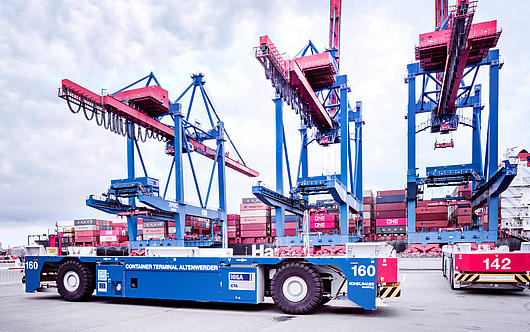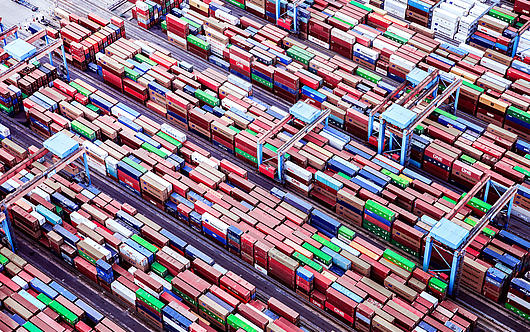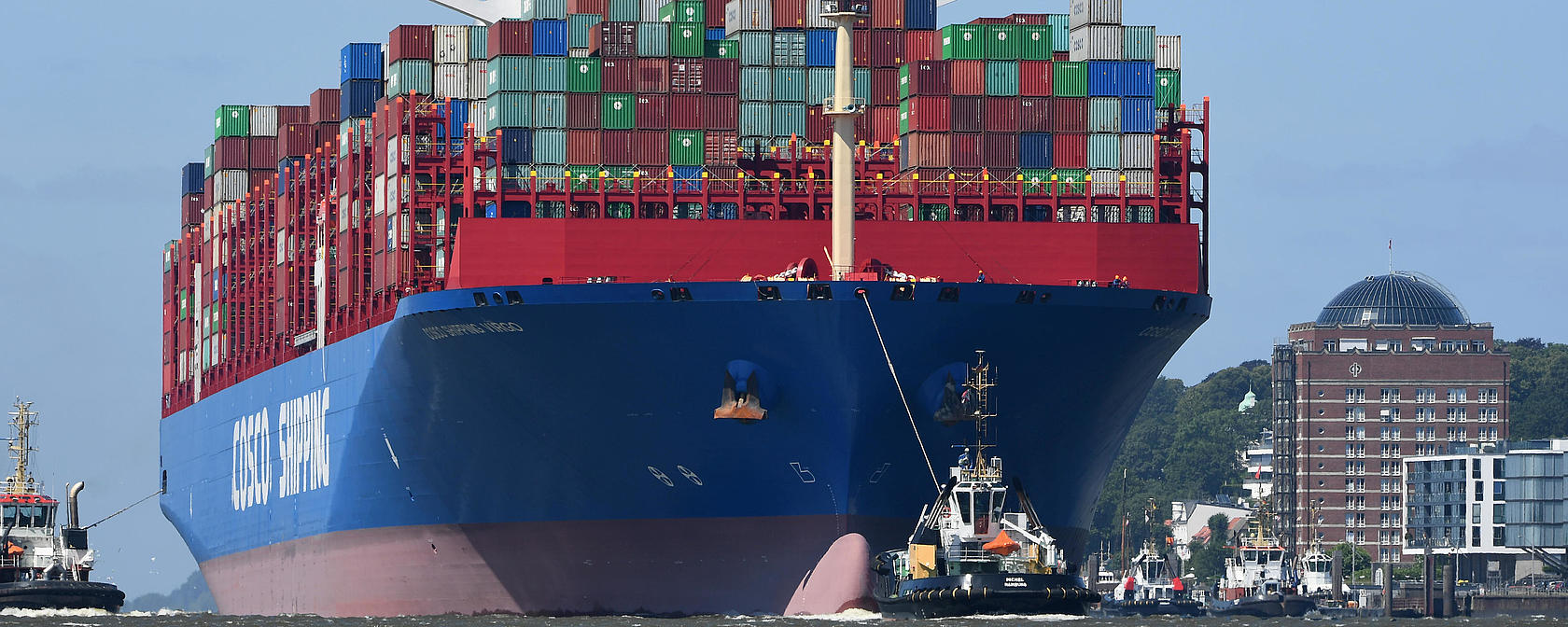
Opposite the Fischauktionshalle, it turns to starboard and is moved towards the berth. The line handlers wait to receive the ship at the HHLA Container Terminal Tollerort (CTT). A highly specialised crew pick up the heavy rope that is used to moor the mega-freighter to the quayside. Until some time in the 19th century, this is where the border once lay between Denmark and various German regions. For this reason, a Hamburg customs post was supposed to have been located at Tollerort. It should be mentioned that this area only belonged to Hamburg from 1937.
Heavy cargo also on board
Today, Tollerort specialises in containers. The cranes, gigantic container gantry cranes, can discharge and load up to 7,500 of the steel boxes when a ship such as the COSCO SHIPPING VIRGO calls at the port. HHLA’s two heavy-duty floating cranes are also not far from the quay wall. They are used, for example, when massive, shiny brass ship propellers made at a special factory in Mecklenburg-Western Pomerania need to be transhipped to Asia for the shipyards there. This is very efficient additional cargo, which is stowed below deck on the container ships. Ships from the China COSCO SHIPPING Corporation have been using CTT for decades. The first Chinese ship – the MV FEN HE 01 – moored at Tollerort on 27 August 1982. It was 170 metres long and only transported around 1,200 TEU. Today, the COSCO VIRGO transports cargo of up to 20,000 TEU.

“The Port of Hamburg has been a central hub for goods coming from and heading to China for a long time”
The Chinese shipping company grew along with the number of steel boxes and today has the fourth largest fleet of container ships in the world. They transport a significant proportion of the goods that are exchanged between the industrialised economies, Germany and China. Also with the help of COSCO and its German partner HHLA, Hamburg has become one of Europe’s most important hubs for seaborne transport to China. In 2022, China was Germany’s largest trading partner for the seventh time in a row, when the total combined weight of all goods exchanged came to more than 24 million tonnes.
Ships handle approximately 80 percent of the trade with China. Other modes of transport are not well suited for such large volumes, making seaports absolutely essential. The share of Germany’s trade with China handled by the Port of Hamburg is around 40 percent. “The Port of Hamburg has been a central hub for goods coming from and heading to China for a long time,” says Axel Mattern, CEO of Hafen Hamburg Marketing e.V. “This has resulted in various partnerships that the Port of Hamburg works hard to maintain.”

“Dialogue instead of distrust”
As a representative of HHLA in China, Lars Anke has to come to terms with many aspects of local life. This is something that European partners should also do when dealing with China, the expert points out.
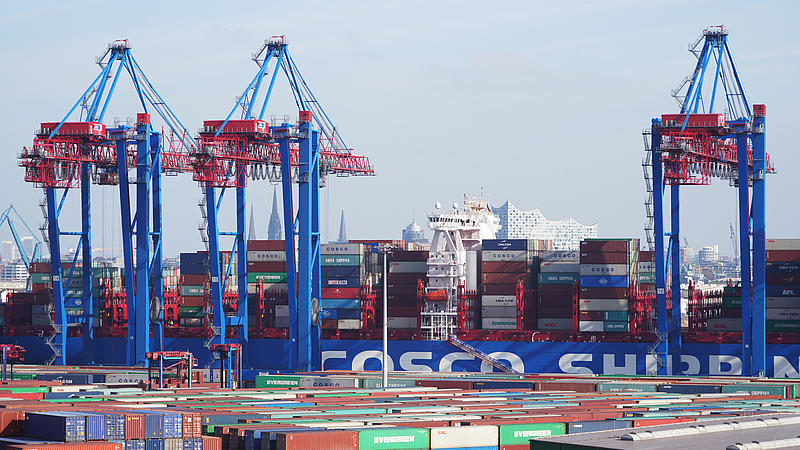
40%
share of Germany’s total trade with China is attributed to the Port of Hamburg
80%
of goods traffic with China is transported by ship
Top five partner countries of the Port of Hamburg
in seaborne container throughput (in 1,000 TEU)
In 2022, approx. 21.8 million tonnes of maritime goods were shipped between Hamburg and China.*

* including onward shipments to other destinations
Bringing partnership to a new level
These business relationships are not just of significance to HHLA. They also offer enormous potential for the future development of the Port of Hamburg as a whole. The long-term, positive relationships with Chinese customers and partners form the basis for the agreement for COSCO SHIPPING Ports Ltd. to acquire a non-controlling interest of 24.99 percent in the CTT operating company. Angela Titzrath, Chairwoman of HHLA’s Executive Board, believes this augurs well for the future: “We are taking our partnership to the next level and strengthening Hamburg’s position as a northern European hub for goods to and from the Far East.” This is necessary because Hamburg’s traditional competitors in Rotterdam and Antwerp are heavily involved in seaborne trade with China. Other ports such as Piraeus, Valencia and Gdansk are growing quickly, partially thanks to investments by shipping companies or their affiliated terminal operators.
This method of strengthening business relationships through investments is standard practice in Europe and other regions around the world, including in China. It ensures that cargo is tied to a specific location over the long term and helps to manage it more effectively. The partnership with COSCO at the CTT will help strengthen Hamburg’s status as a maritime hub over the long term. The blue container ships shall continue to supply Germany and Europe with essential products from around the world.
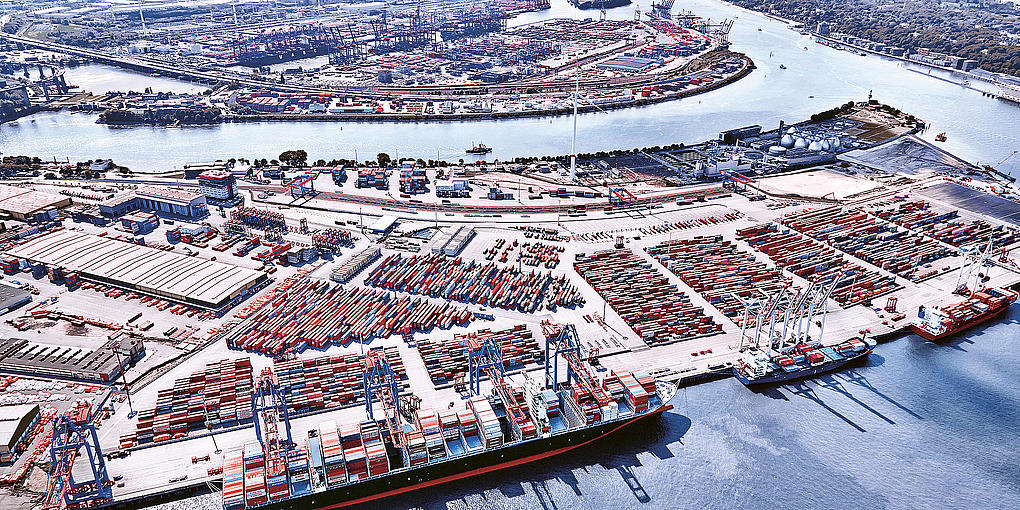
Fact Check: COSCO Investment in HHLA Container Terminal Tollerort
As part of a partnership between HHLA and COSCO, COSCO holds a 24.99% stake in HHLA Container Terminal Tollerort.
